Show that the triangle of maximum area that can be inscribed in a given circle is an equilateral triangle.

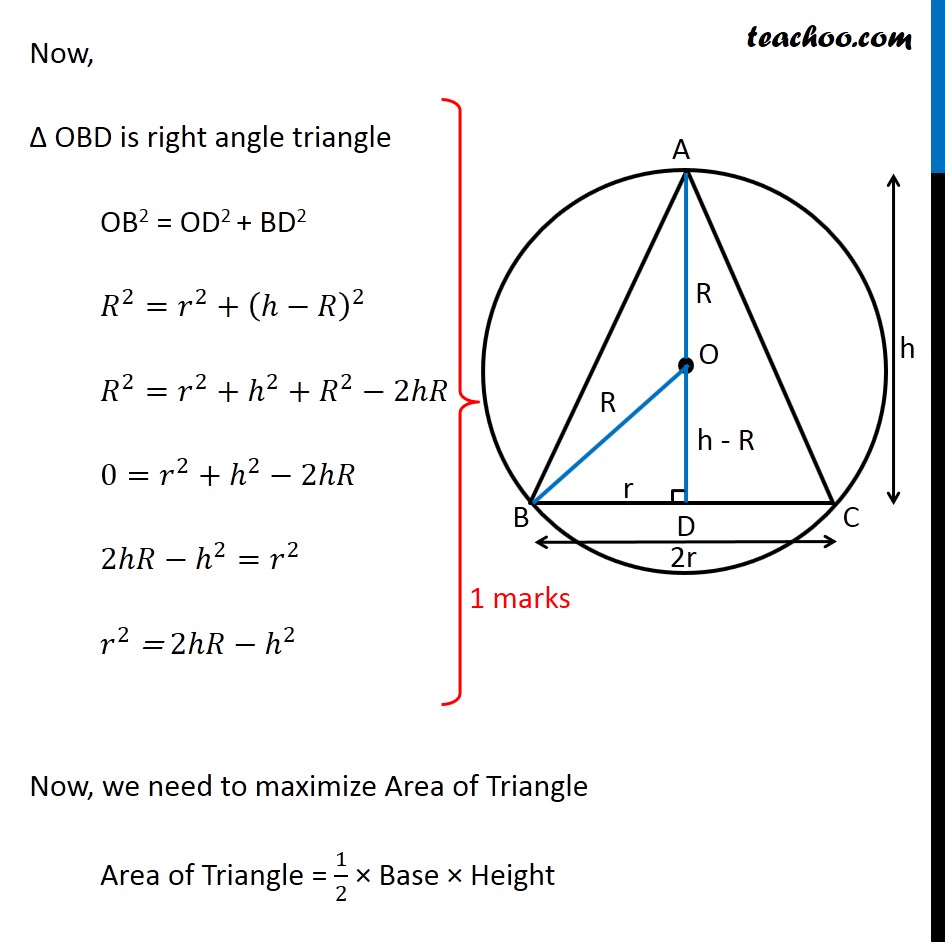
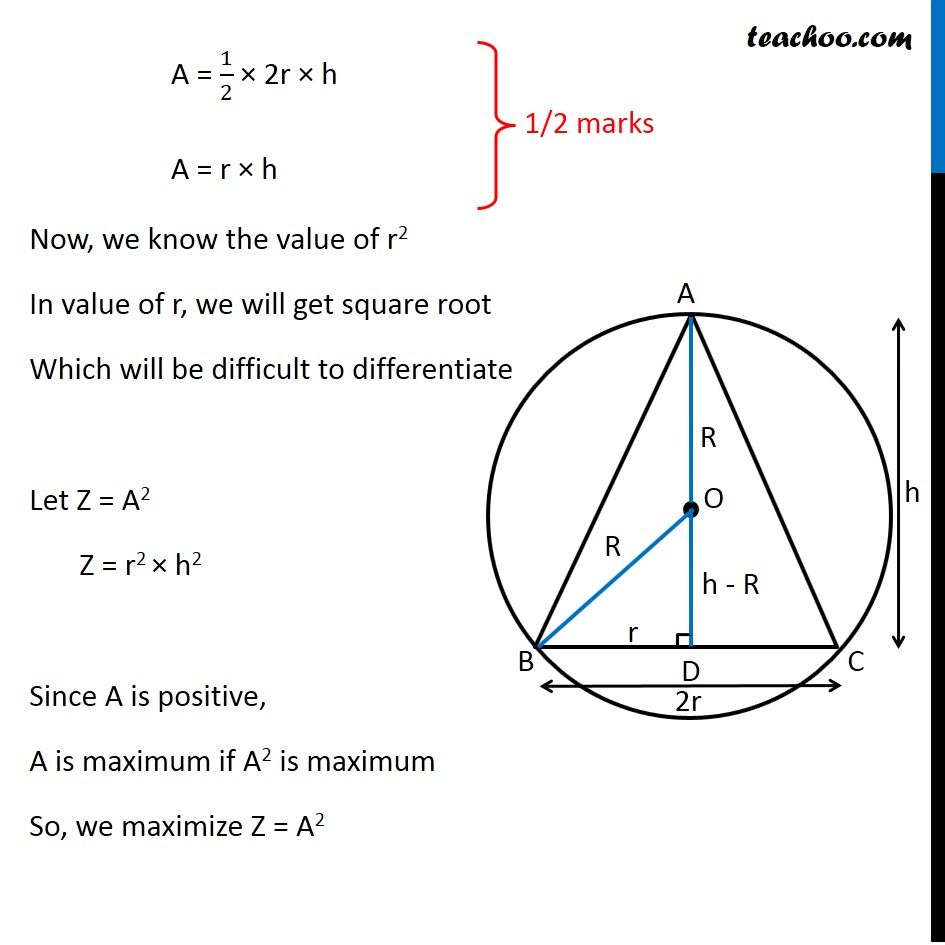
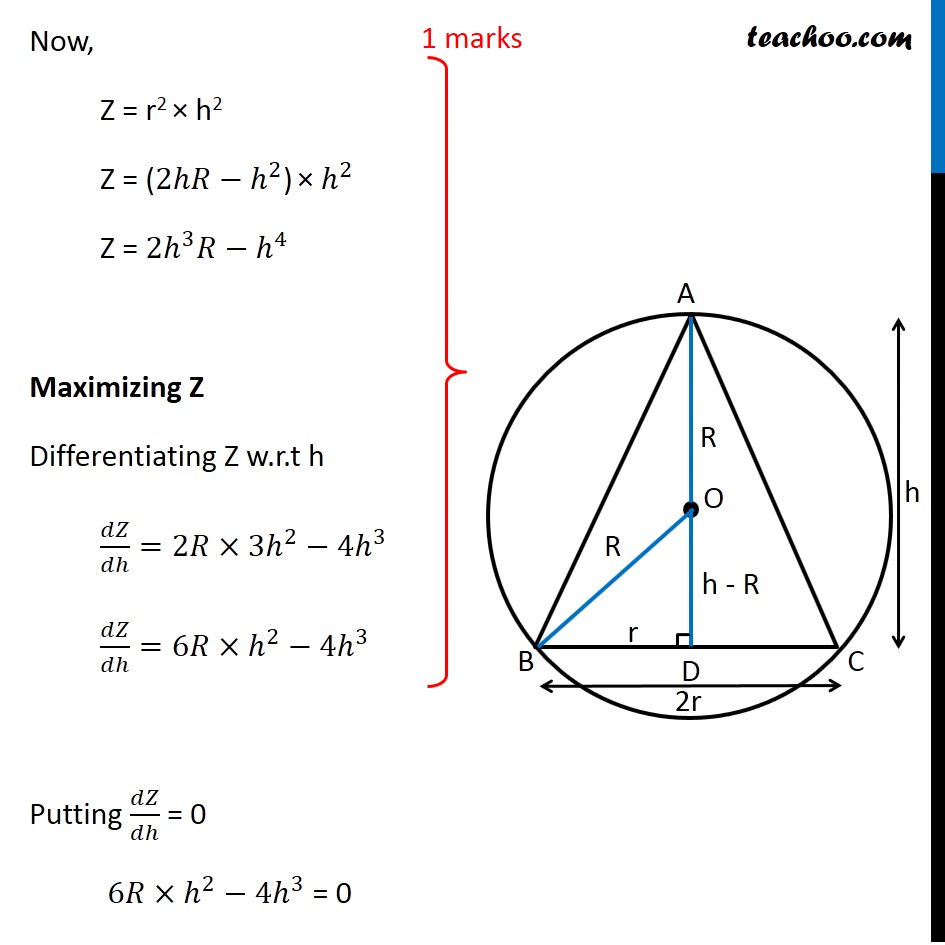
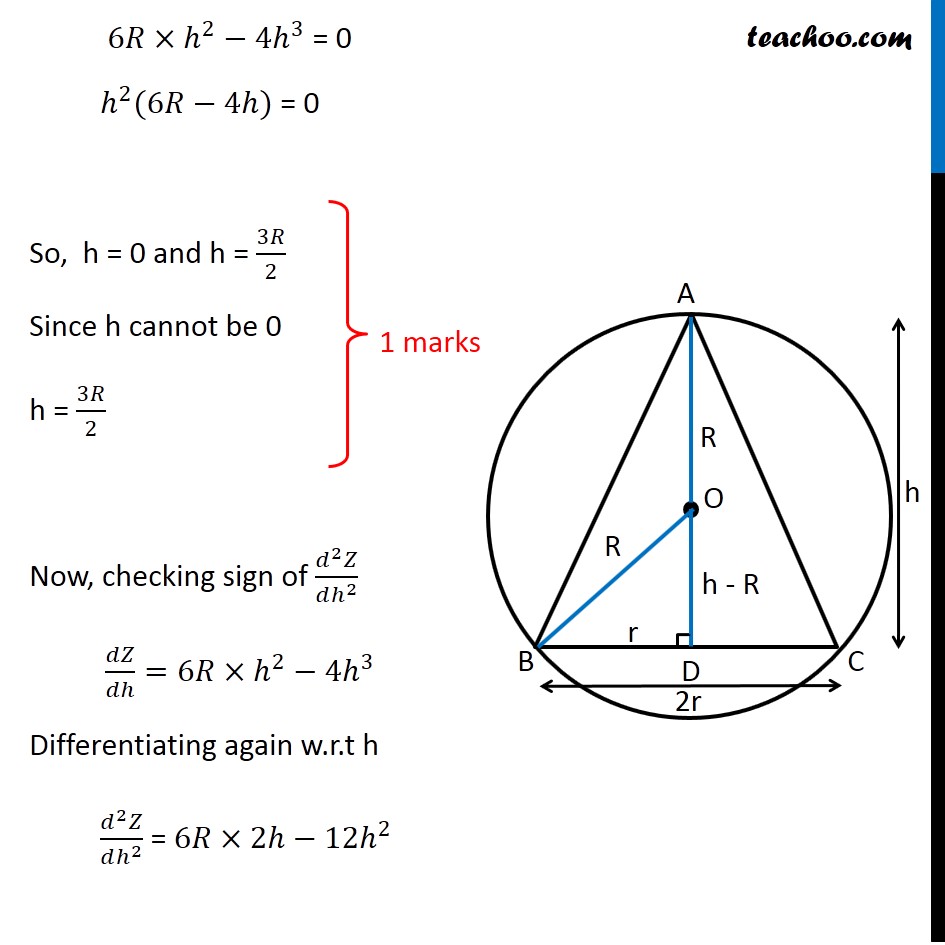
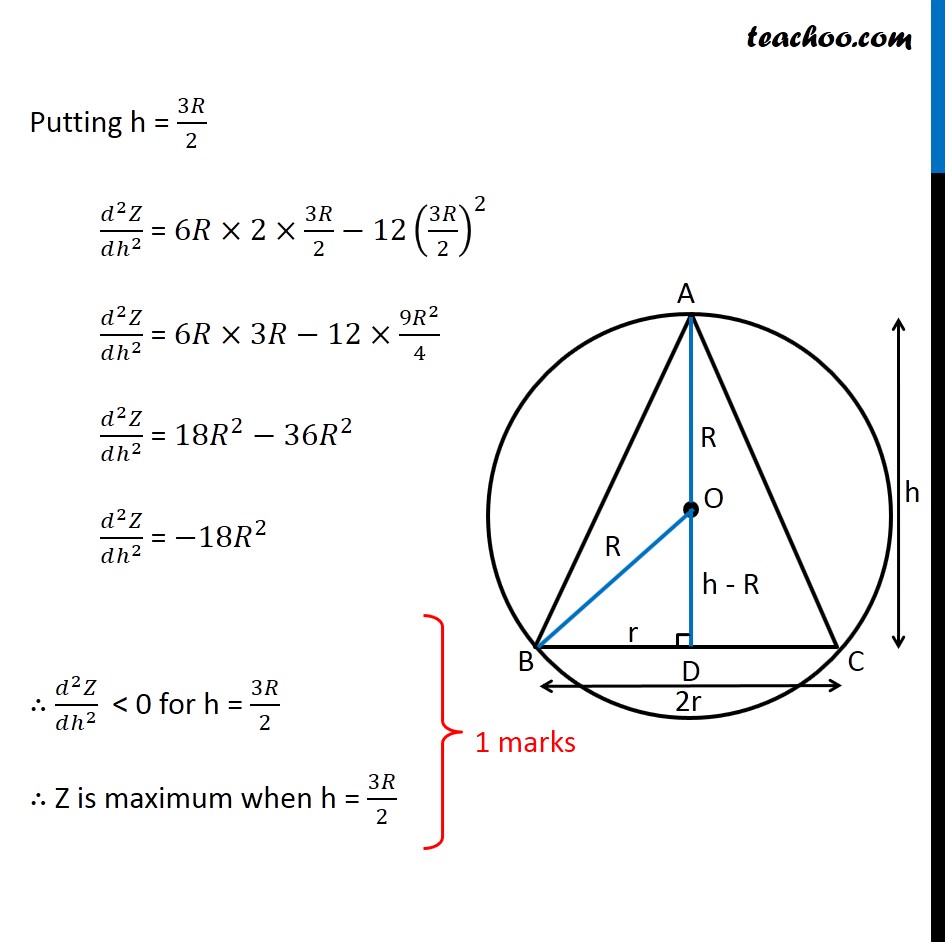
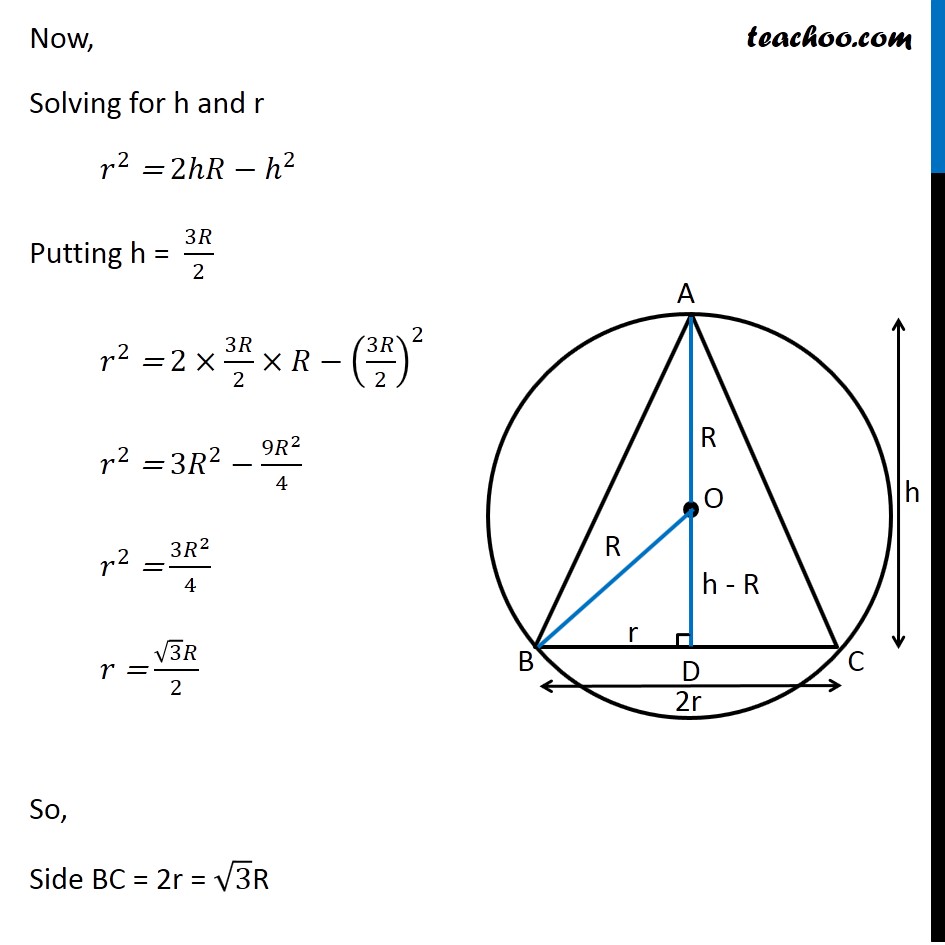
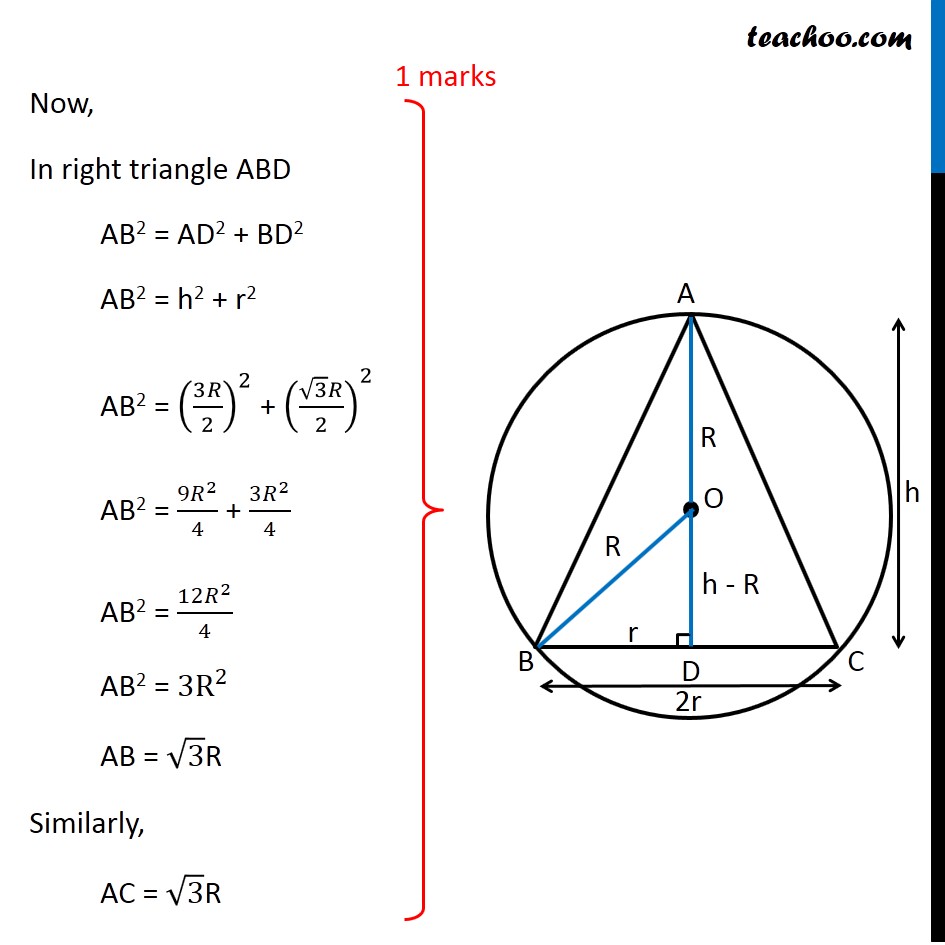
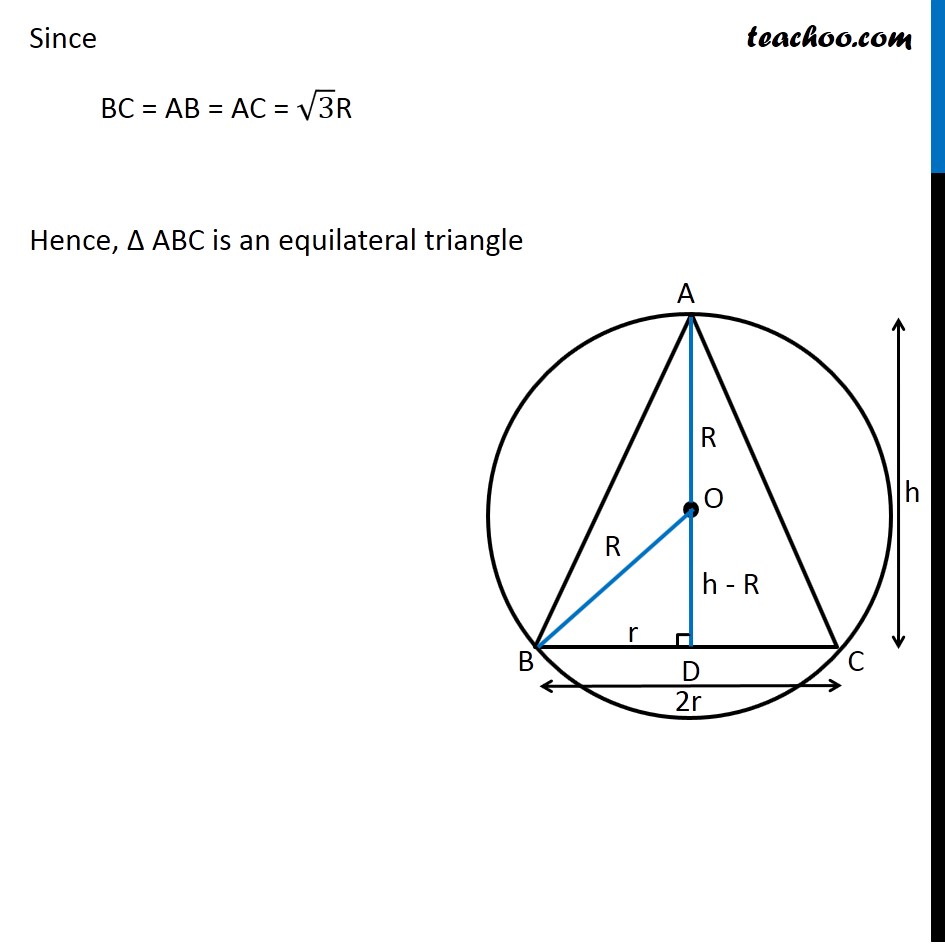
CBSE Class 12 Sample Paper for 2020 Boards
CBSE Class 12 Sample Paper for 2020 Boards
Last updated at December 16, 2024 by Teachoo









Transcript
Question 35 (OR 2nd Question) Show that the triangle of maximum area that can be inscribed in a given circle is an equilateral triangle. Let R be the radius of Circle and h be height of triangle 2r be the base of triangle Let AD be the height, it is perpendicular to BC ∴ OD be perpendicular to chord BC Since perpendicular from chord bisects the chord BD = 𝐵𝐶/2 = r Now, Δ OBD is right angle triangle OB2 = OD2 + BD2 𝑅^2=𝑟^2+(ℎ−𝑅)^2 𝑅^2=𝑟^2+ℎ^2+𝑅^2−2ℎ𝑅 0=𝑟^2+ℎ^2−2ℎ𝑅 2ℎ𝑅−ℎ^2=𝑟^2 𝑟^2 = 2ℎ𝑅−ℎ^2 Now, we need to maximize Area of Triangle Area of Triangle = 1/2 × Base × Height A = 1/2 × 2r × h A = r × h Now, we know the value of r2 In value of r, we will get square root Which will be difficult to differentiate Let Z = A2 Z = r2 × h2 Since A is positive, A is maximum if A2 is maximum So, we maximize Z = A2 Now, Z = r2 × h2 Z = (2ℎ𝑅−ℎ^2) × ℎ^2 Z = 2ℎ^3 𝑅−ℎ^4 Maximizing Z Differentiating Z w.r.t h 𝑑𝑍/𝑑ℎ=2𝑅×3ℎ^2−4ℎ^3 𝑑𝑍/𝑑ℎ=6𝑅×ℎ^2−4ℎ^3 Putting 𝑑𝑍/𝑑ℎ = 0 6𝑅×ℎ^2−4ℎ^3 = 0 6𝑅×ℎ^2−4ℎ^3 = 0 ℎ^2 (6𝑅−4ℎ) = 0 So, h = 0 and h = 3𝑅/2 Since h cannot be 0 h = 3𝑅/2 Now, checking sign of (𝑑^2 𝑍)/(𝑑ℎ^2 ) " " 𝑑𝑍/𝑑ℎ=6𝑅×ℎ^2−4ℎ^3 Differentiating again w.r.t h (𝑑^2 𝑍)/(𝑑ℎ^2 ) = 6𝑅×2ℎ−12ℎ^2 Putting h = 3𝑅/2 (𝑑^2 𝑍)/(𝑑ℎ^2 ) = 6𝑅×2×3𝑅/2−12(3𝑅/2)^2 (𝑑^2 𝑍)/(𝑑ℎ^2 ) = 6𝑅×3𝑅−12×(9𝑅^2)/4 (𝑑^2 𝑍)/(𝑑ℎ^2 ) = 18𝑅^2−36𝑅^2 (𝑑^2 𝑍)/(𝑑ℎ^2 ) = −18𝑅^2 ∴ (𝑑^2 𝑍)/(𝑑ℎ^2 ) < 0 for h = 3𝑅/2 ∴ Z is maximum when h = 3𝑅/2 Now, Solving for h and r 𝑟^2 = 2ℎ𝑅−ℎ^2 Putting h = 3𝑅/2 𝑟^2 = 2×3𝑅/2×𝑅−(3𝑅/2)^2 𝑟^2 = 3𝑅^2−(9𝑅^2)/4 𝑟^2 = (3𝑅^2)/4 𝑟 = (√3 𝑅)/2 So, Side BC = 2r = √3R Now, In right triangle ABD AB2 = AD2 + BD2 AB2 = h2 + r2 AB2 = (3𝑅/2)^2 + ((√3 𝑅)/2)^2 AB2 = (9𝑅^2)/4 + (3𝑅^2)/4 AB2 = (12𝑅^2)/4 AB2 = 3R^2 AB = √3R Similarly, AC = √3R Since BC = AB = AC = √3R Hence, Δ ABC is an equilateral triangle